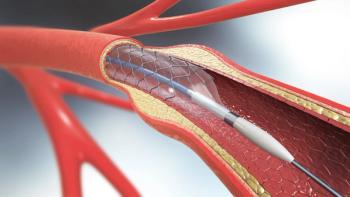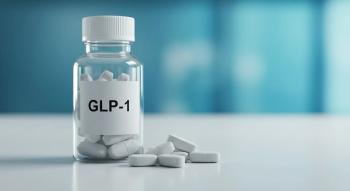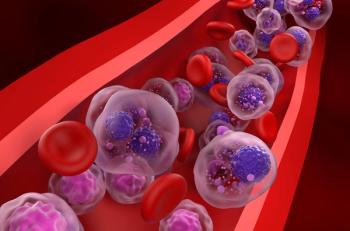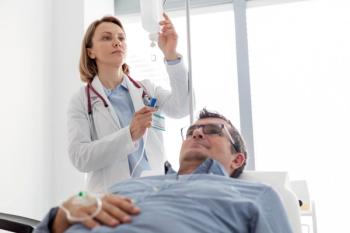
Pharmacy Practice in Focus: Health Systems
- January 2023
- Volume 12
- Issue 1
USP Chapter <797> Is Finalized at Last
Embracing these new standards is the right thing to do for patient safety.
The long anticipated revised United States Pharmacopeia (USP) Chapter <797>, “Pharmaceutical Compounding—Sterile Preparations,” was published on November 1, 2022. It becomes official on November 1, 2023, allowing 1 year for final adoption and implementation of these standards.1 This revision of the standards includes some significant changes from the existing standards that became official in August 2014, and the profession is greeting these changes with the usual mixed emotions.
Compounding is the single riskiest thing we do in health-systems pharmacy, and specifically sterile compounding. For many years, these risks were minimized, unrecognized, or ignored, much to the detriment of our patients.2 When USP standards for sterile compounding were introduced for the first time in 2004 (finalized in 2008), the adoption was slow and generally resisted because of expense, perceived unnecessary waste, time required, and the lack of properly engineered space in many health care facilities. Until USP standards were widely adopted by accrediting agencies (eg, the Joint Commission) and enforced more broadly by the state boards of pharmacy, compliance with these standards was quite variable. The formal training and credentialing of pharmacists and other compounding staff was also generally inadequate and highly variable. A survey conducted in 2014—a full 10 years after the standards were first introduced—indicated incomplete and variable adoption of these safety standards.3 Given the amount of harm that has accrued to patients over the years due to a lack of standards and poor adoption of existing standards, we had a professional obligation to readily adopt these safety guidance statements to create a national standard of safety for patients receiving care in health systems. That remains true today with the most recent revisions, whether we fully agree with all aspects of the chapter or not.
When I started my professional practice in health-systems pharmacy in the early 1980s, it was the Wild West for sterile compounding. Instead of formal clean room suites, we had laminar airflow workbenches in a dedicated room, which might have met segregated compound area standards today, but probably not. We did not routinely wear gowns, masks, or gloves, but those wearing ties did usually tuck them into their shirts to keep them from dangling in the hoods. (Who would want a tie to get soiled?) We cleaned the hoods at the start and end of the day, but not in between unless they got dirty, and we did not consistently use appropriate cleaning and disinfecting agents. One pharmacist who smoked cigarettes while compounding sterile products complained about how the high airflow from the hood caused his cigarettes to burn too fast. This only changed when hospital rules no longer allowed smoking in the department, not because anyone saw it as a risk to sterile compounding. Who needed USP standards?
Today, sterile compounding has truly evolved to a specialty area of pharmacy practice that requires additional education, training, and expertise. We are now required to have specific policies and procedures that relate to training and credentialing, with frequent re-evaluation of compounding personnel skills using quantitative measures. Both pharmacy and pharmacy technician certification boards have recognized the specialized nature of this work with specialty certification.4,5 As a profession, we should embrace this level of specialty training and recognition and require our personnel who lead the efforts in sterile compounding to be recognized through board certification. We owe at least that much to our patients.
It is human nature to resist change and to find fault with requirements as they are heightened, and although I would never advise blind faith in following orders, these revised standards have been vigorously debated and discussed by the profession and revised as appropriate based on that feedback. We have had our chance to question the necessity and veracity of these standards, and it is now time to embrace and implement these updated standards to ensure as consistent an approach to risk management as possible across our institutions.
There are some things in the standards that we should generally like. For example, sterile compounded products have been reclassified into categories 1, 2, and 3, primarily based on the environment under which they are compounded, rather than the prior low-, medium-, and high-risk classifications that seemed arbitrary and restrictive at times. For small institutions and satellite areas, the changes to when a segregated compounding area can be used (driven mostly by how products are categorized) and longer beyond-use dates (BUDs) that can be applied will make the care of patients in those areas much more practical without compromising safety. In addition, the new 4-hour limit for immediate-use products will also help address patient care needs more effectively in those institutions without 24-hour pharmacy services. I am certain these changes will be implemented immediately in most institutions that need this greater flexibility.
Of course, there are also standard changes we don’t like, which will probably be adopted more slowly. The increased cleaning and certification requirements for any clean rooms that participate in compounding category 3 products (even infrequently) are significant changes. Many institutions will need to re-evaluate the real need to be compounding category 3 products and may be forced to consider 503B compounding facilities to meet those needs. In addition, limiting the lot size to 250 units for anticipatory compounding seems arbitrarily restrictive if proper random sterility testing is being maintained in compliance with existing USP standards. The fact that the lot size restrictions apply equally to a 20-bed and a 1000-bed (or more) facility does not appear logical. The other major change affecting anticipatory compounding is the reduction in BUD maximum limits, which will adversely affect efficiency, cost, and waste for those institutions that insource their sterile compounding under Chapter <797>. It seems intended to push those facilities toward registering as a 503B compounding facility or to contract with an existing outsourced 503B compounding facility, both of which may dramatically increase operating costs for questionable benefits. Like most things in life, we don’t all get what we want.
Regardless of whether we agree or disagree with certain aspects of the new standards, the right thing to do from a patient safety and quality perspective is to embrace these new standards and spend the next year redesigning our operations and policies to fully adopt USP Chapter <797> to meet the official deadline. This should be done not because accrediting and regulatory agencies say so, but because we recognize the need to fulfill our obligations to the safety of our patients.
ABOUT THE AUTHOR
Curtis E. Haas, PharmD, FCCP, is director of pharmacy for the University of Rochester Medical Center in New York.
REFERENCES
1. <797> Pharmaceutical Compounding—Sterile Preparations. USP-NF 2022. November 1, 2022.
2. How sterile compounding has evolved and actions taken. Wolters Kluwer. November 12, 2015. Accessed December 1, 2022.
3. Cantor P, Douglass K, Kastango ES. The 2014 USP chapter <797> compliance survey. Pharmacy Purchasing & Products. October 2014. Accessed December 1, 2022.
4. Certified compounded sterile preparation technician (CSPT). Pharmacy Technician Certification Board. Accessed December 1, 2022.
5. Compounded sterile preparations pharmacy. Board of Pharmacy Specialties. Accessed December 1, 2022.
Articles in this issue
almost 3 years ago
Pharmacists Can Help Reduce COPD-Related Readmissionsalmost 3 years ago
Experts Review Treatments, Directions in Basal Cell Carcinomaalmost 3 years ago
Biosimilar Market Outlook Looks Strongalmost 3 years ago
Multiple Myeloma Therapy Often Causes Cardiovascular Complicationsalmost 3 years ago
HSV Offers Promising Target for Preventive, Therapeutic Vaccinesalmost 3 years ago
Stay Up-to-Date on COVID-19 Vaccine, Boostersalmost 3 years ago
Handling IV Solutions Presents Challengesalmost 3 years ago
Deprescribing Helps Optimize Medication Usealmost 3 years ago
"Tripledemic" Highlights The Necessity of VaccinationsNewsletter
Stay informed on drug updates, treatment guidelines, and pharmacy practice trends—subscribe to Pharmacy Times for weekly clinical insights.






































































































































































































